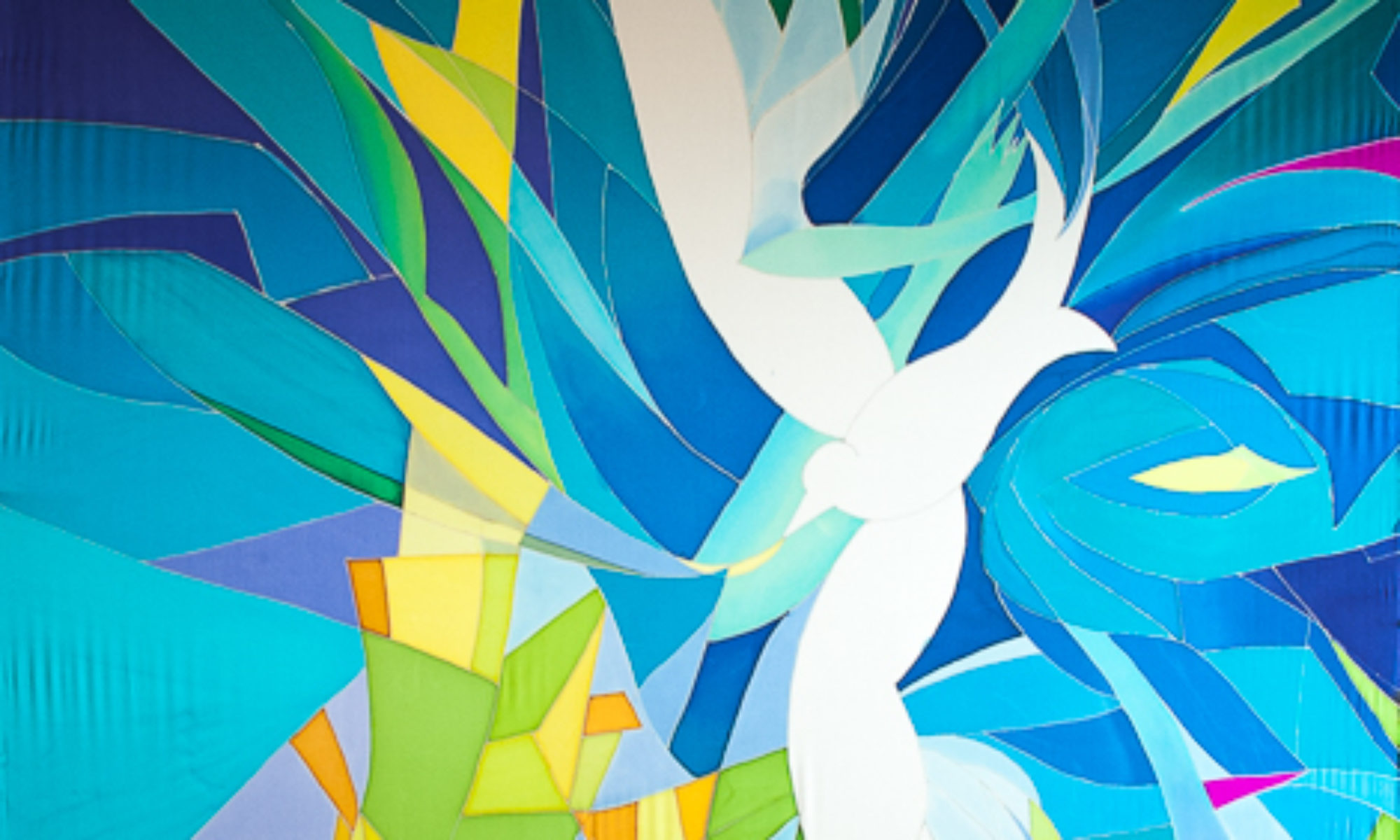Commission for a Seaside Church

I painted this 8 foot by 54 inch banner, for a church in Manasquan NJ, immediately after finishing “Zion’s Waterfall.” I had enjoyed being very loose with the dyes, letting them mix and make textures without much control at all, using hardly any resist. In “Breaking Wave” I wanted to preserve the free and uncontrolled feeling with a different technique: painting with wax. This involved using the resist, which usually I use to control the dye, in a free and easy way. I bought 5 different sizes and shapes of brushes to make varying textures and painterly wax marks on the silk.
The process was similar to making a layered print. The very first wax marks preserved the white of the silk, only where I wanted highlights. Next I put a light layer of blues over the whole piece. After that dried, I put another layer of wax only where I wanted this light blue preserved….then a darker blue, and more wax, until I had all the color values I wanted on the finished piece, from lightest to darkest.
The original idea for this piece came from the pastor who commissioned it. Her congregation had been devastated by Hurricane Sandy in 2012, and her idea was to make a Hurricane Sandy Baptismal Banner. The idea was an intriguing challenge. I love to connect natural images with sacred rite and ritual. After researching photos of the devastation on the web, I came up with the following image. However, I could not find any hope in the subject at all, no sense of the holy.

Even though this piece was more about the destructive forces of nature than the transforming sacred power of baptism, the commissioning pastor liked it. I also had gotten quite attached to the idea of making this piece, not because it represented baptism, but instead the awesome and fierce power of nature, and the challenge of making it. NOT the intended goal…
The idea was to somehow lift the tragedy of Hurricane Sandy into the hands of God, recognizing the sacred water of baptism even in the terrifying walls of water in the storm. This was definitely too fresh a catastrophe for the idea to work. And the image represents “My God, why have you forsaken us?” better than baptism. We realized that this image was not what her people needed, and changed course.
 Challenging art needs to be appropriate for the congregation it serves, and needs especially a person to facilitate discussion around the art, to lead people into challenging ideas with purpose. The purpose is not the art, but the idea. And the idea must be carefully chosen. The art is a tool for thinking about the challenging idea.
The pastor knows their congregation and what they need the most, and how great or small a challenge they need, and most importantly what they need challenging on.
 We turned instead to an image more familiar and less challenging but still powerful: A wave breaking over rocks. I could indeed find the Holy here in the awesome power of water to transform even a rock, but also to nurture life and bring joy. It is a good image of the transforming power of baptism.
Here are pictures of my own exploration of a wave….first on newsprint 9 feet by 55 inches just learning shapes and values.

next a “map” simplified version, Still got carried away by the detail. I put this one under the silk to help me place the dye and wax.

This wax process was new for me…it was fun to have the WAX make the mark, rather than the dye.
My driving emotion for this piece is awe of the sacred in nature, despair in its failure, and hope/faith for change.This is now in a New Jersey church, as a symbol of the transformative power of the waters of baptism.











